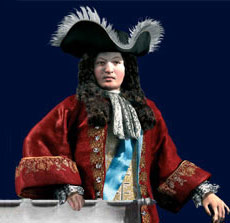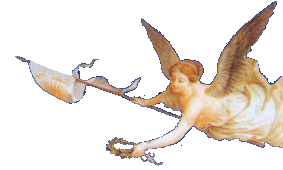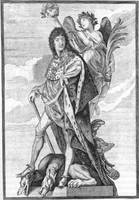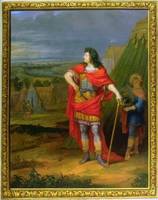Mazarin instructed Louis in the areas of law, kingship and politics till his death in 1661. Two revolts in 1648 and 1653 called to Fronde forced Louis to bring reform to France. The Franco-Spanish treaty ended France's war with Spain and gave them land in the south. France's predominance in Europe had begun. After Mazarin died in 1661 Louis XIV began to rule himself and alone.
The first war was against Spain. Louis married Marie-Therese of Spain in 1660 due to the terms of the Treaty of the Pyrenees. Louis went to war with Spain claiming his wife's right to inheritance to the Spanish throne in 1667 by invading the Spanish Netherlands. He made many quick victories and in 1668, England, Holland and Sweden forced Louis to sign the Treaty of Aix-la-Chapelle. Louis gained 12 fortresses in Flanders, and to isolate Holland he bought Swedish and English neutrality. In 1672, Louis sent an army to invade Holland. The Dutch fought the French until 1678 with Spanish and Austrian support. Other European nations stayed out of the conflict. In 1678, the French and Dutch signed the Treaty of Nijmegan. This treaty gave France the Franche-Comte region and even more forts in Flanders. But what had weakened Louis's power was him revoking the Edict of Nantes in 1685, forcing 200,000 French Protestants into exile. Ill-advised, Louis sent his forces into the Rhineland in 1688 to claim the Palatinate for his sister-in-law Elizabeth Charlotte of Bavaria. Louis was not successful in the War of League of Augsburg, however, and although he devastated the Rhineland, the Treaty of Ryswick in 1697 did not improve France.
The last major struggle of Louis XIV was the War of the Spanish Succession from 1701 to 1714. A previous problem in Europe earlier was who was to succeed Charles II of Spain. The heir to the throne was connected to either the Austrian Habsburgs or the French Bourbons. France did not want the new king to be Austrian because that would make Spain and Austria, two of France's traditional enemies, powerful allies. England did not want the new King to be Bourbon because that would make France and Spain allies, which Britain did not want. King William III of England and Louis XIV decided that the new king should be a Habsburg prince of Bavaria, who would have to agree to never join forces with Austria. But Charles II of Spain made a new will before he died naming Philip V of Anjou the new King of Spain when he died. Louis decided that he would honour the previous agreement made with Britain and not join forces with Spain. But when French forces began to occupy Spanish fortresses in the Spanish Netherlands as a prelude to invading Holland, war was eminent and could possibly upset the European balance of power established at the Treaty of Ryswick of 1697. Britain formed a Grand Alliance of the Netherlands, Denmark and Austria, later Portugal, against France, Spain and a number of German and Italian pricipalities. The War was also called Queen Anne's War.
The principal areas of conflict in Europe were in Italy, the Netherlands and Germany. The naval part of the war, which was secondary, was fought in the Mediterranean. The war opened with Austria invading Italy. The French were originally defeated a number of times, but they soon gained an advantage in that theatre. In 1703, John Churchill, the English Duke of Marlborough attacked the French in the Netherlands and reduced French power there. In 1704, Marlborough defeated the French at the Battle of Blenheim in Bavaria, which drove the French out of Germany. Also, in the same year, the English captured Gibraltar in a combined naval-land operation. In 1706, the French were driven from Belgium and Italy. But in 1707, an Anglo-Portuguese army that had invaded Spain was defeated by French and Spanish forces at the Battle of Almansa. But again, in 1708 at the Battle of Audenarde, the British Duke of Marlborough forced Louis to sue for peace. The negotiations that continued however were unsuccessful when Louis refused to go to war with his grandson the King of Spain. Marlborough defeated the French again in 1709 at the Battle of Malplaquet, the bloodiest of the war. In 1710, more negotiations went on but again, Louis refused to declare war on Spain. In 1711, Emperor Joseph I of Austria died with no heirs and Charles VI succeeded him to the House of Austria. France obtained the advantage and the Grand Alliance broke up. Each member made up different treaties with France, and the pacts all collected to make of the Treaty of Utrecht. But Austria continued war with France and Spain, and in 1714 after the French won many easy victories, the Austrians concluded their war with France but not Spain by the treaties of Rastatt and Baden.
The Treaty of Utrecht recognized Philip, Duke of Anjou as King of Spain under the condition that the kingdoms of France and Spain would not be united. Louis also recognized the Hannoverian Elector George I as King of Great Britain, and ceded the Hudson Bay, Newfoundland and Nova Scotia to Britain. He also allowed the Spanish Netherlands to be given to Austria and he granted the most-favoured-nation status to Britain and Holland. On July 13, 1713, the British made a treaty with Spain that ceded Gibraltar to Britain and giving it sole rights to the slave trade in Spanish colonies. In August, the Spanish gave up Sicily and Savoy and made peace with the Dutch on June 26, 1714. The peace with Portugal did not happen until February 1715. It was not until 1720 that Austria made peace with Spain. The Peace of Utrecht ended French hegemony in Europe and glorified the British presence. It also ended Spanish rule in Belgium and Italy.
Quantity of people in Louis XIV army |
||||
in times of peace |
Conflict |
Infantry and artillery in times of war |
Cavalry, police, navy, coast guard ships |
Totally |
60 000 |
War of Devolution (1667-1668) |
150 000 |
80 000 |
230 000 |
120 000 |
War against Holland (1672-1678) |
210 000 |
190 000 |
400 000 |
150 000 |
War of the league of Augsburg (1689-1697) |
380 000 |
120 000 |
600 000 |
150000 |
War of Spanish Succession (1702-1714) |
410 000 |
220 000 |
630 000 |
Source for the table: "Louis XIV et la guerre / TDC Magazine 731", Page 15








